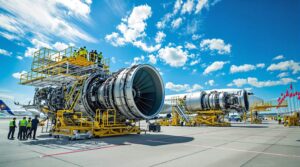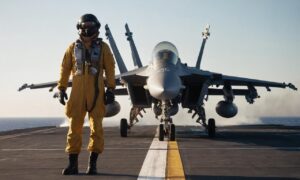Flying has become an integral part of modern life, connecting people across the globe for business, leisure, and various other reasons. With the increasing number of flights taking to the skies each day, safety is a paramount concern for both airlines and passengers. One common question that arises is: What is the safest seat on a plane?
Understanding Aircraft Safety
Before we delve into the specifics of the safest seat, it’s crucial to understand how aircraft are designed and what measures are in place to ensure passenger safety. Modern airplanes undergo rigorous testing and adhere to stringent safety standards set by aviation authorities worldwide.
Typically, commercial airplanes are designed with safety features such as reinforced materials, redundant systems, and advanced avionics to mitigate the impact of unforeseen events. The cabin is also structured to protect passengers in the event of an emergency, but the question remains—does the choice of seat make a difference?
Finding the Safest Seat
Research and analysis have been conducted to determine if certain seats on an airplane offer a higher level of safety than others. While no seat can guarantee absolute safety, some general principles can guide passengers in making informed decisions.
Proximity to Exits
Seats near emergency exits are often considered safer as they provide quicker access to escape routes. Passengers seated in these areas may be called upon to assist the crew in the event of an emergency, so it’s essential to be familiar with the responsibilities associated with these seats.
Aisle or Window?
Debates persist regarding the safety of aisle seats versus window seats. Aisle seats offer easier mobility and quick access to the aisle, while window seats provide a sense of security. The middle seats, often less preferred for comfort reasons, are not necessarily less safe.
Front, Middle, or Rear?
Contrary to popular belief, studies suggest that there is no significant difference in safety between seats located at the front, middle, or rear of the plane. The aircraft’s design and safety features are intended to protect passengers throughout the cabin.
Adhering to Safety Instructions
Regardless of where you sit, the most critical aspect of ensuring a safe flight is to follow all safety instructions provided by the cabin crew. This includes understanding the location of emergency exits, how to use safety equipment, and remaining seated with your seatbelt fastened during turbulence.
Remember that your safety and the safety of others depend on adherence to these guidelines, regardless of the seat you occupy.
While the debate on the safest seat on a plane continues, it’s essential to recognize that aviation safety is a comprehensive effort involving the design, maintenance, and operation of the aircraft. Passengers play a crucial role by staying informed, following safety instructions, and maintaining situational awareness throughout the flight.
Enhanced Safety Measures
Continual advancements in aviation technology contribute to enhanced safety measures on modern aircraft. From state-of-the-art communication systems to improved navigation equipment, these innovations aim to make air travel even safer for passengers.
4. Seatbelt Technology
Seatbelt designs have evolved to provide better protection during various flight conditions. Some seats now come equipped with advanced seatbelt technology, including built-in airbags and sensors that adapt to different levels of turbulence, ensuring a snug and secure fit for passengers.
5. Evacuation Procedures
Understanding evacuation procedures is crucial for all passengers. Airlines conduct regular drills to familiarize passengers with the process, emphasizing the importance of remaining calm and orderly during an evacuation. This knowledge can significantly contribute to overall passenger safety.
Frequently Asked Questions
Addressing common concerns and queries about airplane safety can help passengers make informed decisions and alleviate apprehensions. Let’s explore some frequently asked questions related to choosing the safest seat and general aviation safety.
| Question | Answer |
|---|---|
| Q1: Are aisle seats safer than window seats? | A1: Both aisle and window seats have their advantages. The choice often depends on personal preferences, such as ease of mobility or a sense of security. |
| Q2: How do I assist in an emergency exit row? | A2: Passengers seated in emergency exit rows should familiarize themselves with the responsibilities outlined by the airline. These may include assisting the crew in case of an evacuation. |
| Q3: Is there a difference in safety between front, middle, and rear seats? | A3: Studies suggest that the aircraft’s overall design ensures a consistent level of safety throughout the cabin, regardless of the seat’s location. |
Adhering to Safety Instructions
While technological advancements contribute to aviation safety, passenger cooperation remains paramount. Following safety instructions provided by the cabin crew is crucial to ensuring a secure and incident-free journey for everyone on board.
Conclusion
As technology and research continue to shape the aviation industry, the pursuit of safety remains constant. Passengers are encouraged to stay informed, adhere to safety guidelines, and actively participate in maintaining a secure environment during air travel.






